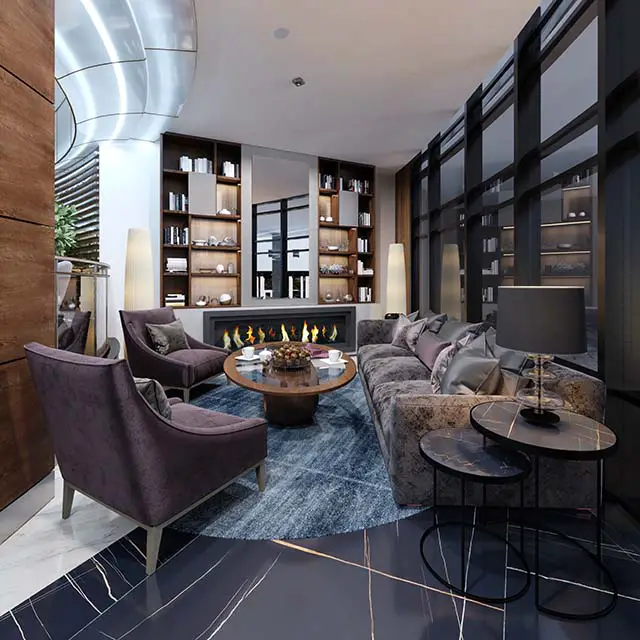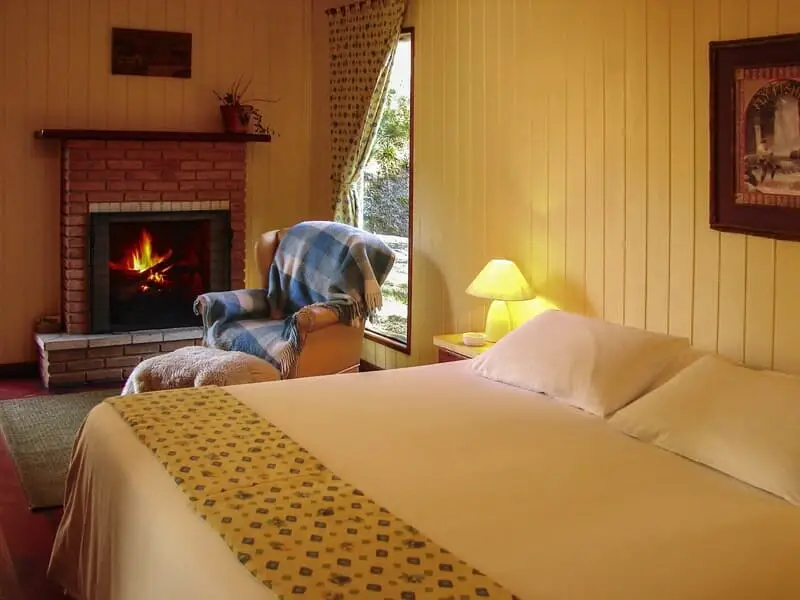- There are no state or federal laws that restrict the number of fireplaces a homeowner can have in their house
- However, some localities may have stricter regulations and it’s important to verify local codes before installing any additional fireplaces
A lot of people think that a house can only have one fire place, but that’s actually not true! A house can have multiple fire places, depending on the size and layout of the house.
So, if you’re looking to add a little bit of extra warmth to your home, don’t be afraid to add more than one fire place! Historically, fire places were actually quite common in homes, so you’re really just bringing back an old tradition.
In terms of State & Federal restrictions, there aren’t any, so as long as you follow all the safety precautions, you should be able to have as many fire places as you want in your home.
Just make sure to check your local city restrictions, as they may have their own rules about fire places.
Theoretically, each room might have a fireplace. In the days before power, fireplaces generated heat for households throughout the cold.
This was particularly important in northern areas because it would become too cold without a source of heat. Tenement dwellings would have a fireplace for every room.
Fireplaces are significantly less common nowadays, but visualize a house with 50 fireplaces. That’s too many chimneys.
One may have numerous fireplaces in different rooms or just a single fireplace in different areas. A popular fireplace feature is to install it in a wall separating two rooms so that you can watch the flames from both angles.
Conventional fireplaces have historically had low-efficiency ratings, with the bulk of heat produced by an open fire being lost through the chimney instead of being utilized to warm a room.
Fireplaces won’t warm a room as much as a wood stove, but you’ll nevertheless feel toasty sitting closer to an open fireplace.
Open fires can be as inefficient as 10%, which means that the vast majority of heat created by the open fire is wasted via the chimney. This is because the draft caused by the ascending heated air from a fire draws smoke as well as any waste particles from the fire out of your house.
Contents
Is There a Legal Cap?
There aren’t any state or federal legal restrictions on the number of fireplaces you may have in your home. Cities have their own limitations, which can be more stringent than those established by the state.
Some localities like San Joaquin Valley, have rules that limit the amount of fireplaces allowed in a home, but this is far less frequent than limitations on fireplace usage related to air pollution controls.
There are currently no federal construction rules that limit the number of fireplaces that may be installed in a home. The federal standards for fireplaces only specify how far flammable material must be kept away from the fireplace.
Local construction rules supersede federal codes, so verify your local codes before adding fireplaces in your house. It’s conceivable that there are certain restrictions in your area.
Do Fireplaces Increase the Value of the House?

There is debate among realtors and homebuyers over whether fireplaces increase the value of a home. Real estate agents will assure you that they do.
According to Angie’s List, installing a fireplace in a property can boost its value up to $5,000 or 6-12%, based on statistics from research and surveys conducted by realtors.
Fireplaces are described as opulent, appealing, and nostalgic by realtors. According to realtors, 40% of purchasers said they would be ready to spend extra for a property with a fireplace.
Is There a Fireplace in Every House?
Every year, the United States Census Bureau publishes information on fireplaces, and the results reveal a gradual drop in the prevalence of fireplaces. By 1990, 34% of new housing were constructed without a fireplace. That number has increased to 61%.
There appear to be many more sensible methods to stay warm, and tv sets have become the customary highlight of the living area. If you wanted to recreate the experience, you could even watch a video of a cracking fire.
Is it Legal to Have a Fireplace in the Bedroom?

Not only is a fireplace permitted in your bedroom, but it is also among the three most typical areas for a fireplace, alongside the main room and outdoor lounge area.
One thing to keep in mind when putting a fireplace inside the bedroom would be that fireplaces are inherently dangerous. The most obvious danger is lighting a fire outside of the fireplace. If a spark escapes or there isn’t an enclosure surrounding the fire, it could spread swiftly.
Fortunately, carbon monoxide and oxygen monitors can warn you before something horrible happens.
Conclusion
Venting is the most important consideration when installing specific fireplaces in your house. Because wood produces smoke, the law mandates that a ventilation system be constructed in conjunction with a wood fireplace.
To vent a gas fireplace is usually simple. Some gas systems are even constructed without a vent. There are also electric fireplaces, which don’t require a vent and provide instant, consistent heat.

